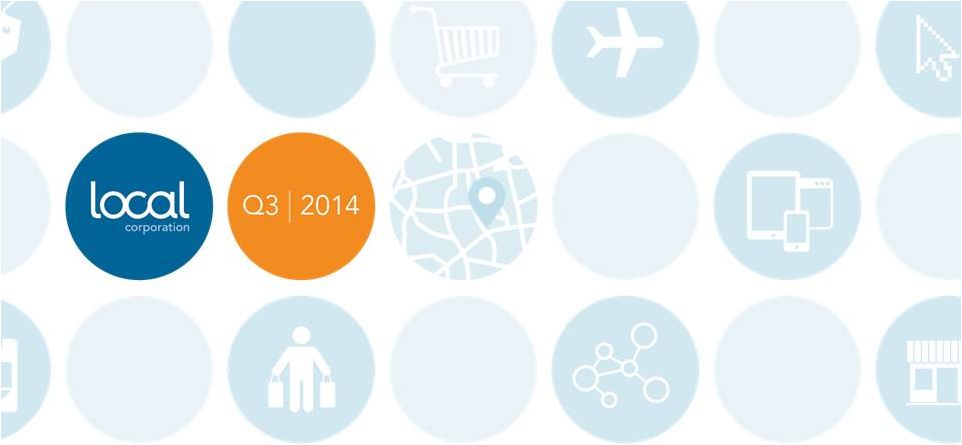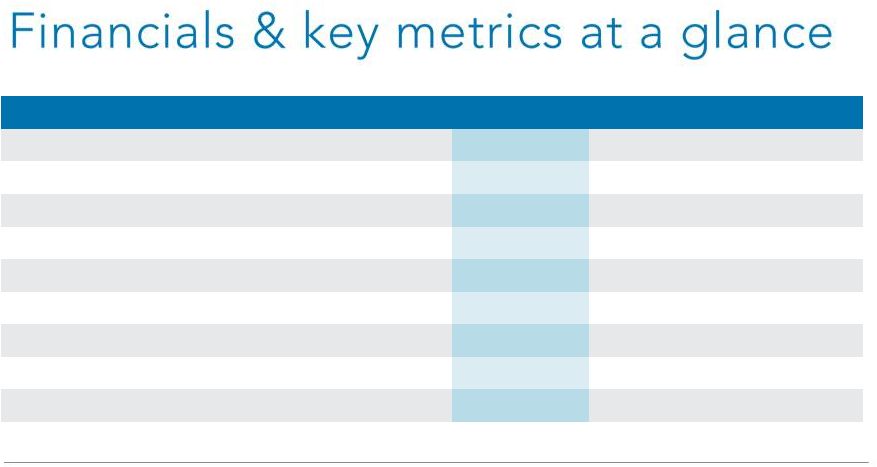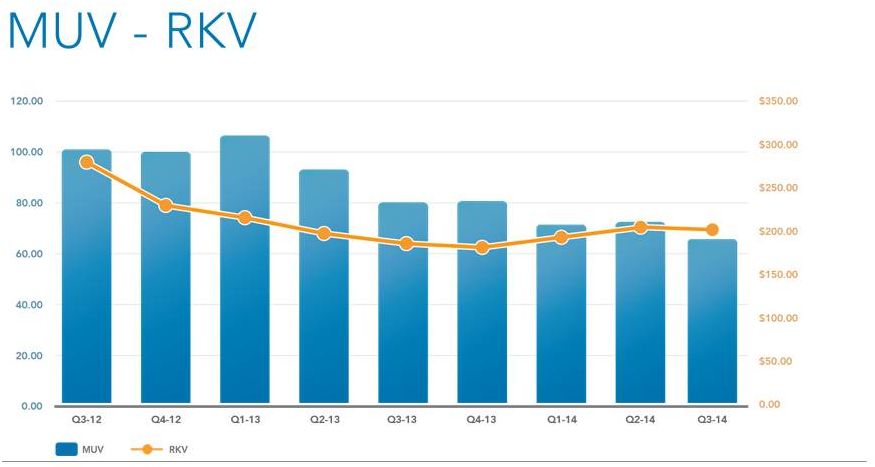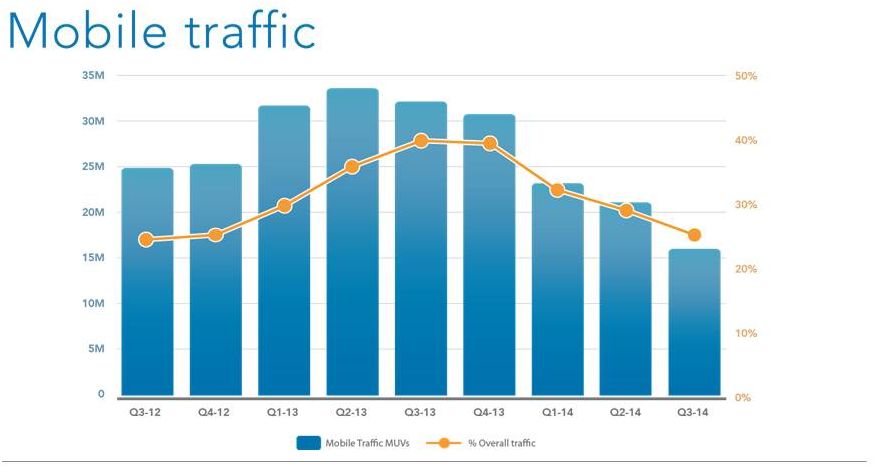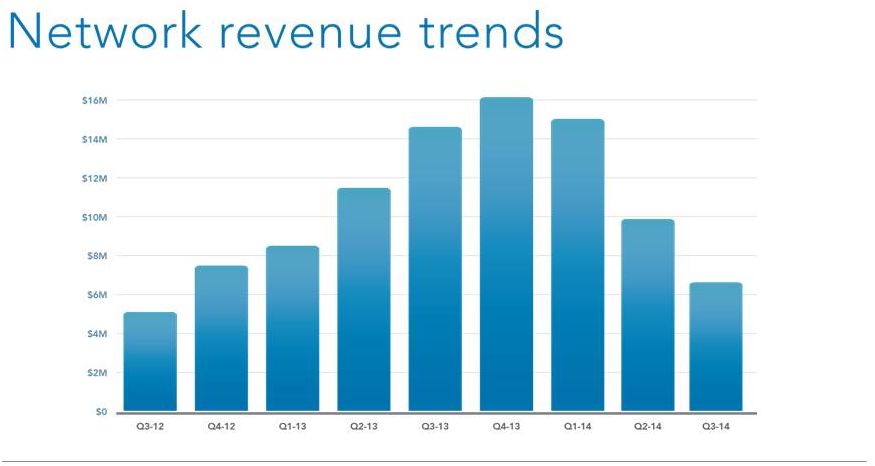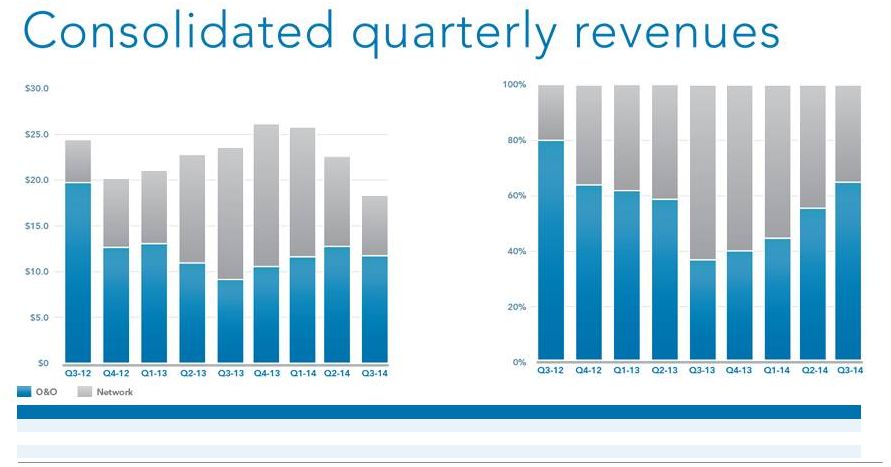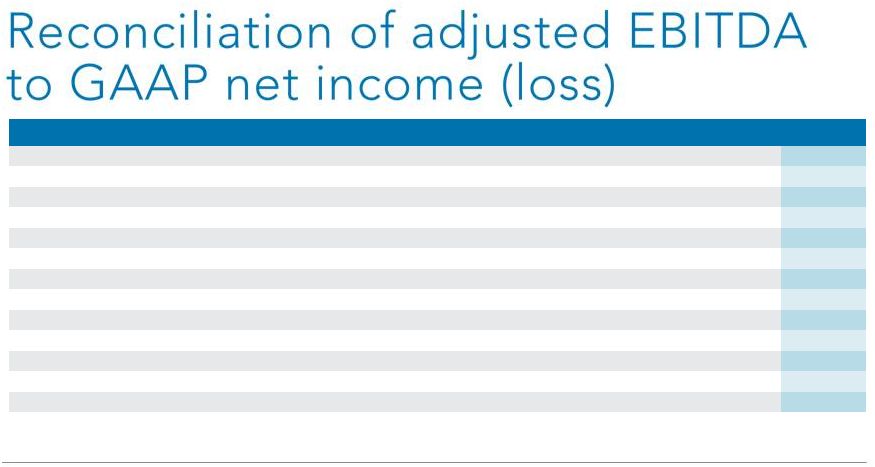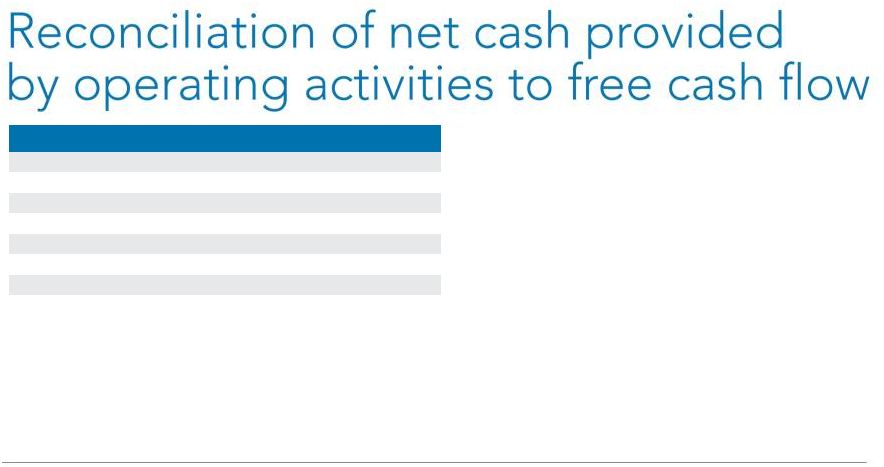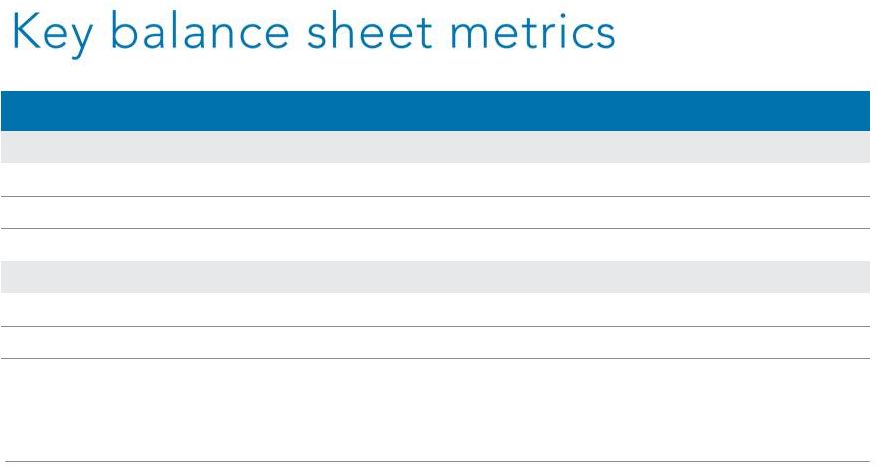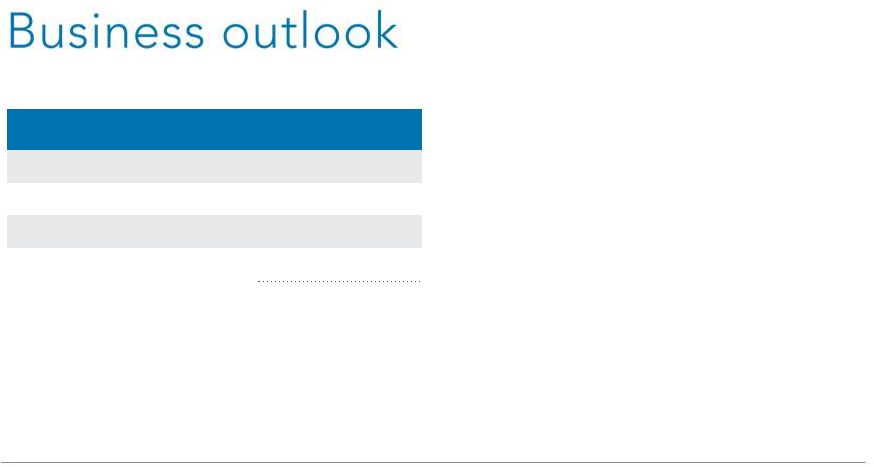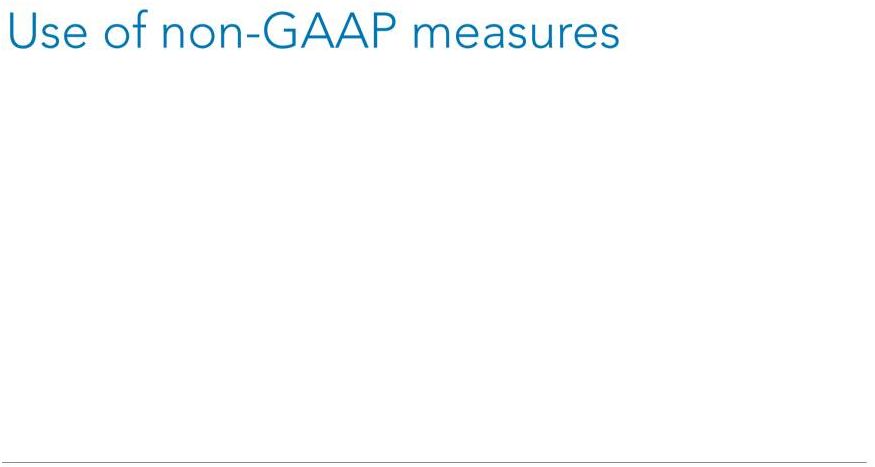13 Quarterly earnings summary: Q3 2014 A limitation of non-GAAP Adjusted EBITDA is that it excludes items that often have a material effect on the company’s net income (loss) and earnings per common share calculated in accordance with GAAP. Therefore, management compensates for this limitation by using Adjusted EBITDA in conjunction with net income (loss) and net income (loss) per share measures. The company believes that Adjusted EBITDA provides investors with an additional tool for evaluating the company’s core performance, which management uses in its own evaluation of overall performance, and as a base-line for assessing the future earnings potential of the company. A limitation of using free cash flow versus the GAAP measure of net cash provided by operating activities as a means for evaluating the company is that free cash flow does not represent the total increase or decrease in the cash balance from operations for the period because it excludes cash used for capital expenditures during the period. The company believes that free cash flow provides investors with an additional tool in evaluating the company’s liquidity. While the GAAP results are more complete, the company prefers to allow investors to have this supplemental metric since, with reconciliation to GAAP, it may provide greater insight into the company’s financial results. The non-GAAP measures should be viewed as a supplement to, and not as a substitute for, or superior to the GAAP measures. This press release includes the non-GAAP financial measures of “Adjusted EBITDA” and “free cash flow.” Adjusted EBITDA is defined as net income (loss) excluding: provision for income taxes; interest and other income (expense), net; depreciation; amortization; stock based compensation charges; gain or loss on derivatives’ revaluation; net income (loss) from discontinued operations; accrued lease liability/asset; and severance charges. Adjusted EBITDA is reconciled to net income (loss) which we believe is the most comparable GAAP measure. Free cash flow is defined as net cash provided by operating activities less capital expenditures. Free cash flow is reconciled to net cash provided by operating activities which we believe is the most comparable GAAP measure. Adjusted EBITDA and free cash flow, as defined above, are not measurements under GAAP. A reconciliation of net income (loss) to Adjusted EBITDA and free cash flow to net cash provided by operating activities is set forth at the end of this press release. Management believes that Adjusted EBITDA provides useful information to investors about the company’s performance because it eliminates the effects of period-to-period changes in income from interest on the company’s cash, expense from the company’s financing transactions and the costs associated with income tax expense, capital investments, stock- based compensation expense, net income (loss) from discontinued operations, derivatives’ revaluation charges; accrued lease liability/asset; settlement accrual; and severance charges which are not directly attributable to the underlying performance of the company’s business operations. Management uses Adjusted EBITDA in evaluating the overall performance of the company’s business operations. Management also believes free cash flow to be a liquidity measure that provides useful information to management and investors about the amount of cash generated by the business that, after the acquisition of property and equipment, including information technology infrastructure and land and buildings, can be used for strategic opportunities, including investing in our business, making strategic acquisitions, and strengthening the balance sheet. Analysis of free cash flow also facilitates management's comparisons of our operating results to competitors' operating results. | 